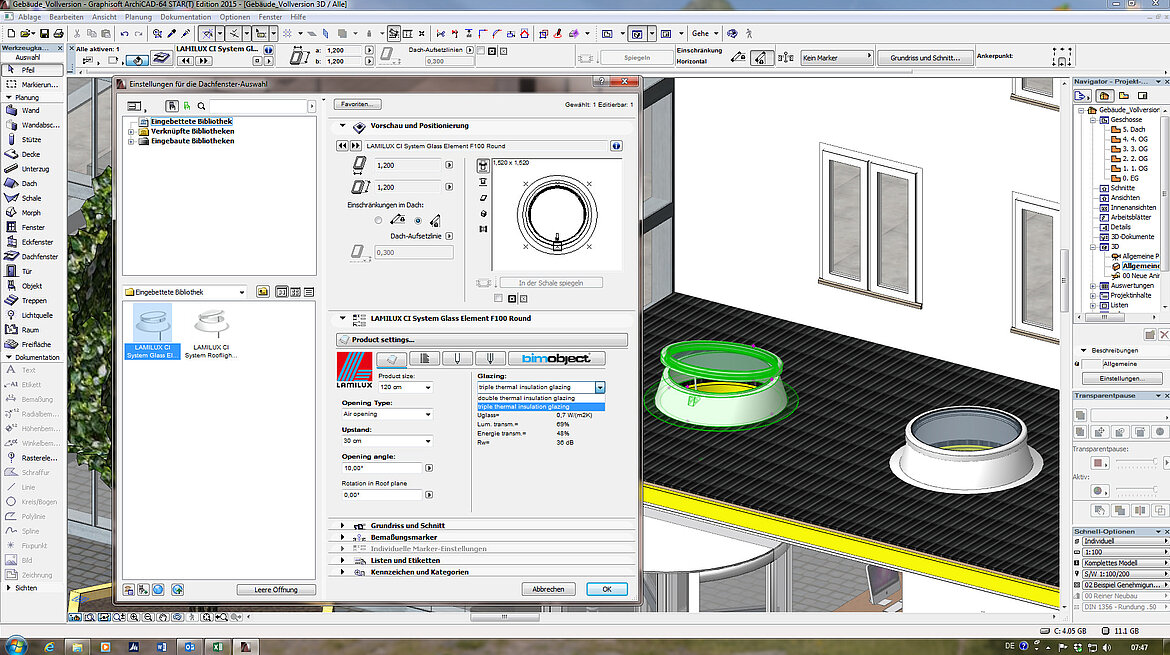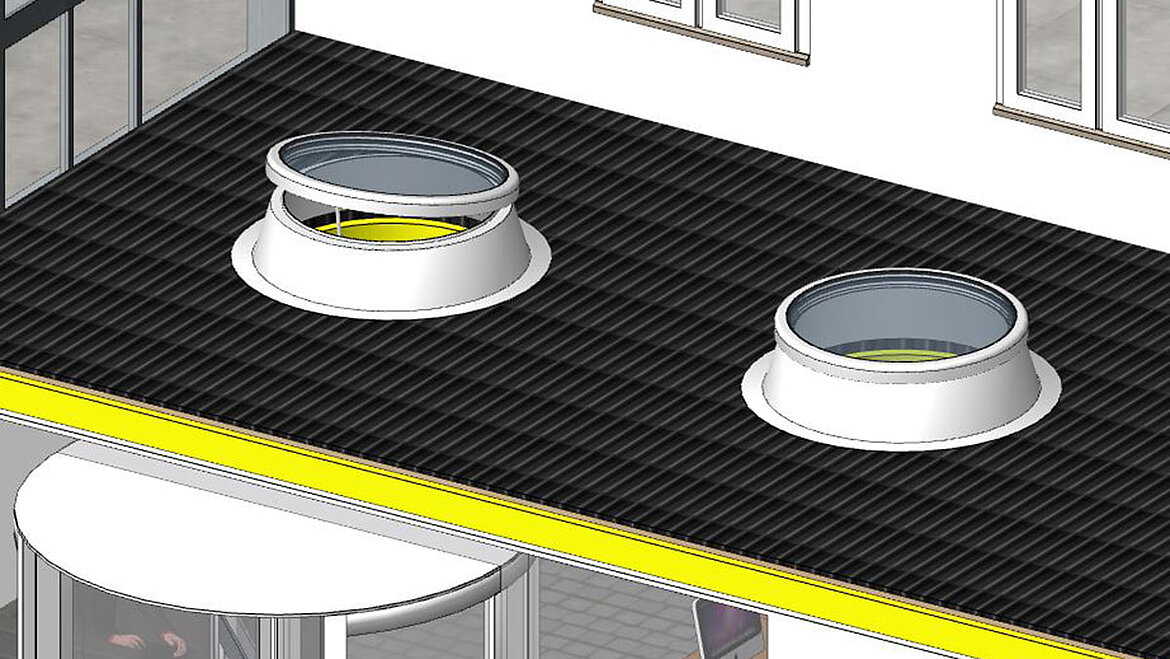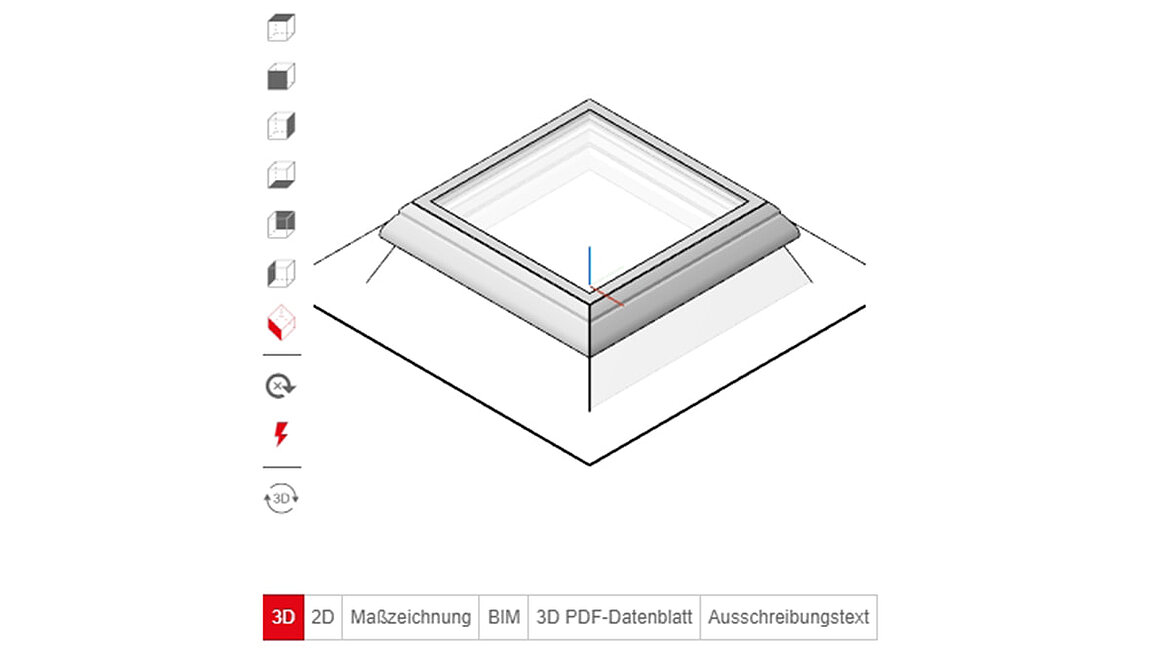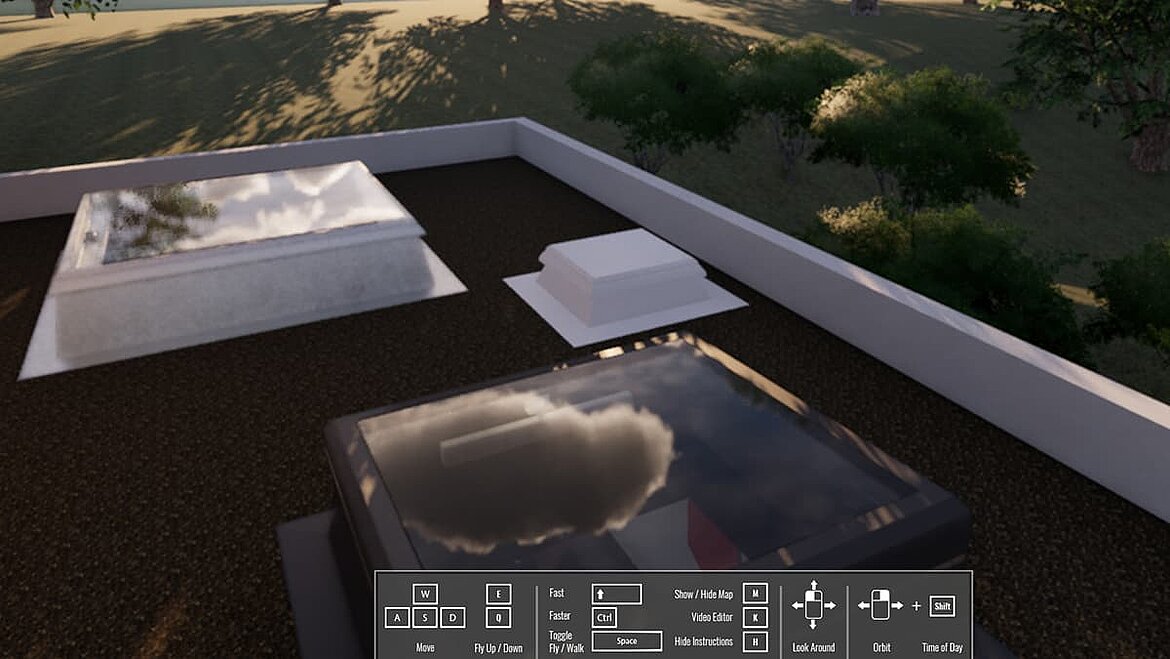Skylights as BIM models
In order to be able to document construction projects digitally, the BIM process has become an essential part of building planning. The resulting 3D models of the buildings and areas show every detail. That way rooms can be built and all building elements such as windows and doors can already be planned in the software. The construction data document the entire project, so that all construction projects, from lighting design to renovation or expansion of the building, are digitally displayed in advance. With that, not only individual buildings but also entire areas can be depicted. The 3D models make it possible to avoid planning errors at an early stage already, reduce costs and plan with the later real design of the elements. In this way, BIM facilitates digital construction planning - also thanks to skylight as BIM models.
The manufacturer of skylights LAMILUX has created its product configurator for this purpose. The planner can configure his individual variant of a skylight and is guided through a self-explanatory and dynamically adapting dialogue. Plausibility checks run in the background and a live 3D viewer supports the planner in his process. He can see immediately whether the configured product corresponds to his ideas and what the technical values are. If everything is configured as desired, the required product data can be downloaded for exactly this generated variant: BIM data, 2D and 3D CAD data, images, dimensional drawings and data sheets - all in a variety of selectable file formats. In this way, skylight domes, angular or round flat roof windows and flat roof hatch are created according to your individual requirements.
Configure your flat roof window, skylight dome or roof hatch for the roof terrace - it's child's play.
BIM at the product development stage already
Meanwhile, the generation of BIM data is already integrated in the actual product development process. Thus, the generation of BIM models is being pushed simultaneously besides the design and development of the real products, so that the digital models for Revit and ArchiCAD are already available at the market launch of the real products. These BIM models are not only rigid geometries or individual models that are uploaded into the CAD programs, but each product family includes a comprehensive configurator that maps a wide range of possible product characteristics.
Architects, planners, BIM – and circular Glass Skylights
The example of the Circular Glass Skylight F100 from LAMILUX demonstrates the advantages and benefits of the product families created in BIM. All models have a parametric structure and provide extensive detailed information. For example, the available dimensions, the available types of glazing as well as possible opening versions can be selected via drop-down menus, whereupon the models are then automatically adapted in the CAD.

Detailed information for the selected combination can be read off for the selection made, such as the U-values or the building material classes. This avoids queries during the planning phase and the values can then be used directly for the design of the building, for example for energy considerations. The immense advantage of this: Significant time saving in the design and planning phase, which frees up capacities for other work steps, innovative thinking and creative design.
The design aspect of the models is not neglected either. The visually appealing reproduction of the models enables architects to depict the planned building project as realistically as possible in the virtual environment from different perspectives in the planning phase already. The models have, for example, movable sashes, which means that this functionality can be used to simulate different design scenarios on the one hand, but also for collision control on the other hand.


Object-specific planning with BIM
Not only standardized products are taken into consideration in digital planning. Individual solutions can also be planned using the BIM process. Examples of such projects are large glass roof constructions like those using the post-and-beam system PR60, which are designed and planned individually with the respective architects. For projects like these customers, especially from English-speaking countries, are increasingly requesting BIM-capable data exchange in Revit format. In order to also be able to handle these individual projects optimally and efficiently, LAMILUX can provide the individual glass roof constructions as Revit files for specific projects, so that glass roofs can be planned easily as with the FGS Campus in Bonn.

Product configurator for BIM models and more
In addition, LAMILUX has developed its own product configurator, which enables you to plan daylight even better. With this you can, for example, generate your flat roof window F100 in 3D or 2D, create a dimensioned drawing, a 3D PDF data sheet and a tender text - and of course the BIM model in various file formats.



Head of BIM at LAMILUX is civil engineer and Academy Director Carsten Ficker. He describes the company's goals as follows: "Customer benefit remains our driver. We are still a long way from reaching our digital goal. Instead, we want to go on the digital journey with our customers and develop new products together. BIM is not the only digital topic in construction, but it is a very important one. With the configurator, we are meeting the great demand for customised product data for planning and tendering, not only for BIM but also for those working conventionally."

